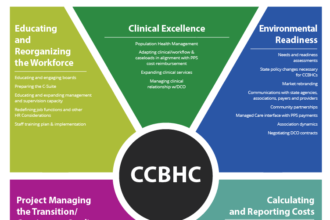
Come and get it!
I’d expect an emergency physician with 35 years of experience to have some solid insights on why people come to the emergency room. Sure enough, Dr. Paul Auerbach delivers the goods in his Wall Street Journal opinion piece (Why ER Visits for Non-Emergencies Aren’t Going Away). In particular:
- Patients can’t easily distinguish between true emergencies and non-emergencies
- You can’t teach economics lessons to people when they are sick
- Patients have learned they can get care in an emergency department more conveniently and quicker than in a community setting
- Ambulatory physicians are culpable, because they encourage patients to go to the ER and don’t offer convenient hours
- Emergency room use will continue to be heavy until key deficiencies in care delivery are addressed
So it was interesting that the Journal published five letters from people with different ideas. I disagree with four (all by doctors), and note that the fifth idea (by someone who may be a dentist) is already being implemented.
- Dr. Ainslie thinks that “if ERs were forced to post prices, patients could decide what services they wanted to use.” That might work for an elective knee replacement, but doesn’t square at all with my experience in the ER. Am I really going to pick out what emergency services I want and exclude others? Who is going to have the time to discuss the costs and tradeoffs? Am I going to try my luck at a different ER if I don’t like the pricing at the first? Ridiculous
- Dr. Dunn complains that primary care physicians like him spend half their time filling out documentation that offers no value add for the patient. He thinks docs should be paid “for the service they provide (without having to battle for reimbursement) and eliminate the non-value-added documentation.” This would boost the capacity of primary care physicians and reduce the need for emergency room use. I’m sympathetic to the paperwork complaint but I don’t think we can replace it with no questions asked fee for service. If Dr. Dunn is ready to take on global capitation for his population of patients then his idea might work. Even then there will be some paperwork
- Dr. Geehr blames ObamCare. “ObamaCare, like its predecessor RomneyCare, promised fewer ER visits and more primary-care access. Government always fails to account for the unintended consequences of vast, new entitlement programs.” Actually, some proponents of ObamaCare (including me) did foresee the rise in ED utilization. Opponents didn’t think of this argument ahead of time, since they were so busy blaming the uninsured for clogging up the emergency department.
- Dr. Brotherton writes, “the best way to reduce ER visits is for insurers to pay adequately for primary care.” Somehow –he doesn’t explain how– this will cause patients to go to their primary care doctors instead of the emergency room. I’ll give him the benefit of the doubt and suggest that he means higher payments will induce more physicians to practice primary care, but that would take quite a while to play out and still doesn’t address patient behavior.
- David Lieberman wants hospitals to put urgent care clinics alongside emergency departments to keep the non-emergencies out. Not a bad idea and some hospitals are actually doing this. It works best when hospitals have a financial incentive to hold down costs
Image courtesy of Stuart Miles at FreeDigitalPhotos.net
—
By healthcare business consultant David E. Williams, president of Health Business Group.
![]()







